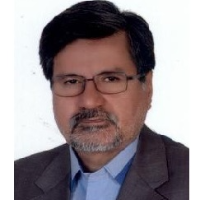Analyzing the Use of Origami to Increase the Solar Radiation on Photovoltaic Panels Through Software Simulation
According to statistics published in the field of energy, today, buildings are known as the largest consumers of energy. Hence, the technological advances in the field of construction increasingly focus on new solutions to reduce energy consumption in the building sector. Achieving environmentally friendly solutions in order to move towards sustainable development in the field of architecture has been considered by architects and designers. Using adaptable technologies in building shells for the use of renewable energy is an important solution. As one of the most important sources of renewable energy, the sun has a small share in producing clean energy in the building section so far. But in recent decades, scientists and designers have increasingly focused on this clean source of energy. One of the new ways to benefit from solar energy is the use of photovoltaic panels. Shells consisting of photovoltaic panels that generate electricity from sunlight are recognized as an essential solution to reduce the use of fossil fuels. The use of low-cost and effective techniques in the field of architecture has contributed significantly to the improvement of the construction process.
This study aims to investigate the effect of using folding techniques to choose the best angle of position for photovoltaic panels used on building facades to increase the solar radiation by using parametric (Grasshopper) and energy (Ladybug) simulation software. After a general analysis of different types of origami methods and the cases used in the construction industry, and the natural forms, four patterns were selected as the basic modules for further study and modeling by the Ladybug plugin in Grasshopper software. Based on the defined and conventional criteria (constructability, without shading, setting toward the sun), these samples could be used on vertical facades of buildings. The base module that can be placed on the vertical facade was modeled, and an extra module was defined based on the literature review on the optimal angle in Tehran latitude to maximize the received solar energy.
A total of 6 final samples were prepared to be simulated. The simulated modules were optimized based on a genetic algorithm using the Galapagos plugin to find the optimal position for receiving maximum solar radiation. This optimization was actually done based on the form parameters to find the most optimal form (a combination of angle and slope). This study seeks to answer the research questions: How can the solar radiation received in photovoltaic panels be increased by using geometric patterns based on the origami technique? In other words, how can the solar radiation be increased by changing the geometric arrangement of the photovoltaic panels according to the daily and annual solar movement patterns? The present study showed that the efficiency of photovoltaic panels is not improved only by using expensive technologies and solar trackers. The factor of change in solar radiation, which is the most important factor in receiving solar radiation during short and long periods of time, can be adjusted by accessible techniques such as the origami technique. In other words, by changing the angle of photovoltaic panels using computer technologies based on the solar movement, more solar energy can be received from radiation. This study shows that changing the arrangement of different photovoltaic panels using the origami technique compared to the base module on the southern facade can increase the received solar energy. The change of forms can increase the produced electrical energy from 3.44 and 11.39%.
According to this research, V-shaped (zigzag) modules can absorb more solar radiation due to the larger photovoltaic panels area. Although the amount of solar radiation per unit area decreases, their use is logically justified when the available surface area is limited. Also, the use of modules made with the help of the Miura origami method showed that it is possible to receive more solar radiation to some extent without using solar trackers or moving views at an economical cost because the different sides of these patterns are more able to absorb radiation over a long period of time (due to the variable daily and seasonal solar movement patterns).
- حق عضویت دریافتی صرف حمایت از نشریات عضو و نگهداری، تکمیل و توسعه مگیران میشود.
- پرداخت حق اشتراک و دانلود مقالات اجازه بازنشر آن در سایر رسانههای چاپی و دیجیتال را به کاربر نمیدهد.



